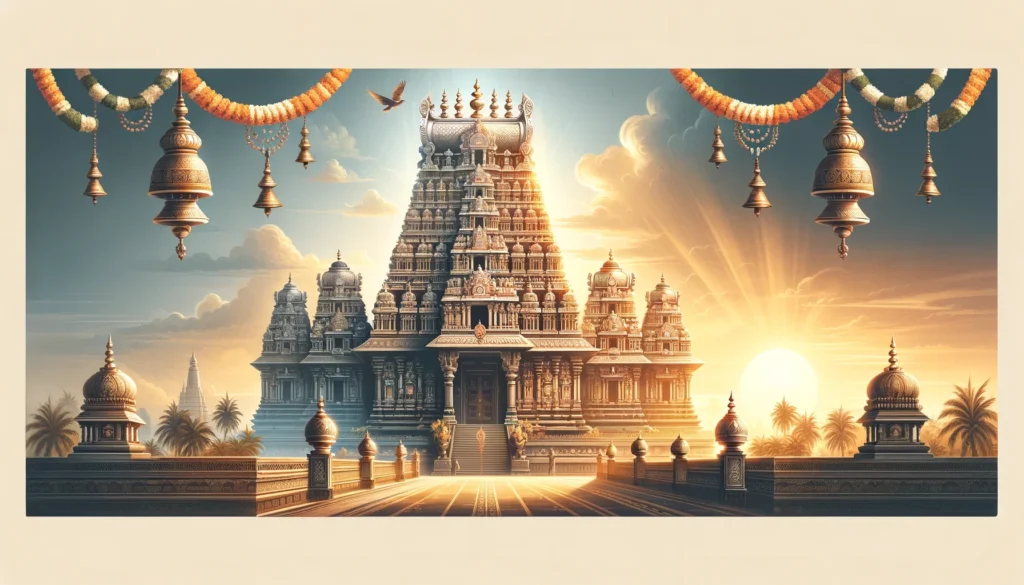Explore the rich history, architectural marvels, and spiritual significance of the Srikalahasti Temple. This detailed travel guide covers darshan timings, rituals, nearby attractions, and practical tips for an unforgettable pilgrimage experience.”
Embarking on a pilgrimage to the Srikalahasti Temple is a profound spiritual journey that intertwines devotion, history, and culture. Located in the town of Srikalahasti in Andhra Pradesh, India, this ancient temple is dedicated to Lord Shiva, worshipped here as Kalahasteeswara, the “Lord of the Wind.” Renowned for its architectural grandeur and deep-rooted legends, Srikalahasti is often referred to as the “Kailasa of the South.”

Historical Significance of Srikalahasti Temple
The origins of the Srikalahasti Temple trace back to the 5th century CE, with significant contributions from various South Indian dynasties. The inner sanctum was constructed during the Pallava period, while the Chola dynasty, particularly under Rajendra Chola I, expanded the temple complex in the 10th century. The Vijayanagara Empire, under the reign of Krishnadevaraya in the 16th century, added the towering 120-feet main gopuram (gateway tower) and the hundred-pillared hall, showcasing intricate carvings that exemplify Dravidian architecture.
Architectural Marvel
The temple’s architecture is a testament to the craftsmanship of ancient artisans. The main sanctum houses the Vayu Linga, representing the element of air, one of the Pancha Bhoota Sthalams (five elemental shrines) dedicated to Lord Shiva. The temple complex features elaborate mandapams (halls), each adorned with detailed sculptures depicting mythological narratives. The hundred-pillared hall, constructed during the Vijayanagara period, is particularly noteworthy for its ornate pillars and exquisite detailing.
Spiritual Significance
Srikalahasti is revered for its association with the Vayu Linga, symbolizing the air element. Devotees believe that worshipping here can cleanse one’s soul and grant liberation (moksha). The temple is also renowned for the Rahu-Ketu pooja, a ritual performed to negate the malefic effects of planetary positions, attracting pilgrims seeking astrological remedies.
Temple Timings and Sevas (Services) pf Srikalahasti Temple
The temple operates daily from 6:00 AM to 9:00 PM, with specific timings for various rituals:
- Abhishekam (Anointment Ceremony): Conducted at 6:00 AM, 7:00 AM, 10:00 AM, and 5:00 PM.
- Rahu-Ketu Pooja: Performed multiple times daily, with specific slots available for booking.
It’s advisable to check the official temple website or contact the administration for the most current schedule and booking procedures.
Dress Code and Etiquette
Devotees are expected to dress modestly, adhering to traditional attire. Men are encouraged to wear dhotis or trousers with a shirt, while women should wear sarees or salwar kameez. Maintaining decorum within the temple premises is essential, respecting the sanctity of the environment.
Accommodation and Facilities
Srikalahasti offers a range of accommodation options, from budget lodges to mid-range hotels. Some popular choices include:
- Hotel MGM Grand
- Sri Sai Teja Residency
- Devansh Bhanu Residency
It’s advisable to book accommodations in advance, especially during festival seasons, to ensure availability.
Local Cuisine
The town features eateries serving authentic South Indian cuisine. Don’t miss trying local delicacies like dosa, idli, and traditional Andhra thali. While exploring, ensure that the food establishments maintain proper hygiene standards.
Nearby Attractions
While in Srikalahasti, consider visiting nearby attractions to enrich your pilgrimage experience:
- Bharadwaja Tirtham: A sacred water body believed to have been created by Sage Bharadwaja.
- Durgambika Temple: Situated on a hillock, offering panoramic views of the town.
- Veyilingala Kona Waterfalls: A picturesque spot ideal for relaxation and nature walks.
Travel Tips
- Best Time to Visit: October to March offers pleasant weather, making it ideal for pilgrimage and sightseeing.
- Transportation: Srikalahasti is well-connected by road and rail. The nearest airport is Tirupati Airport, approximately 26 km away.
- Local Customs: Respect local traditions and participate in rituals with sincerity. Engaging with local devotees can provide deeper insights into the temple’s significance.
Personal Experience
During my visit to Srikalahasti, the temple’s serene ambiance and architectural splendor left an indelible impression. Participating in the Rahu-Ketu pooja was a spiritually uplifting experience, and the meticulous rituals performed by the priests added to the sanctity of the occasion. Exploring the town, interacting with locals, and savoring traditional cuisine enriched my journey, offering a holistic understanding of the region’s cultural tapestry.
A pilgrimage to Srikalahasti Temple is not merely a religious journey but an exploration of India’s rich heritage and spiritual ethos. The confluence of history, architecture, and devotion makes it a destination that resonates with both the devout and the discerning traveler. By immersing oneself in the temple’s rituals and the town’s cultural milieu, one can experience a profound sense of peace and spiritual fulfillment. Also you can visit the famous Lord Venkateswara temple at Tirumala during your visit.
Author Details

Prof. Anitha Ranga
Expertise: South Indian temple heritage and traditions
Email:[email protected]

